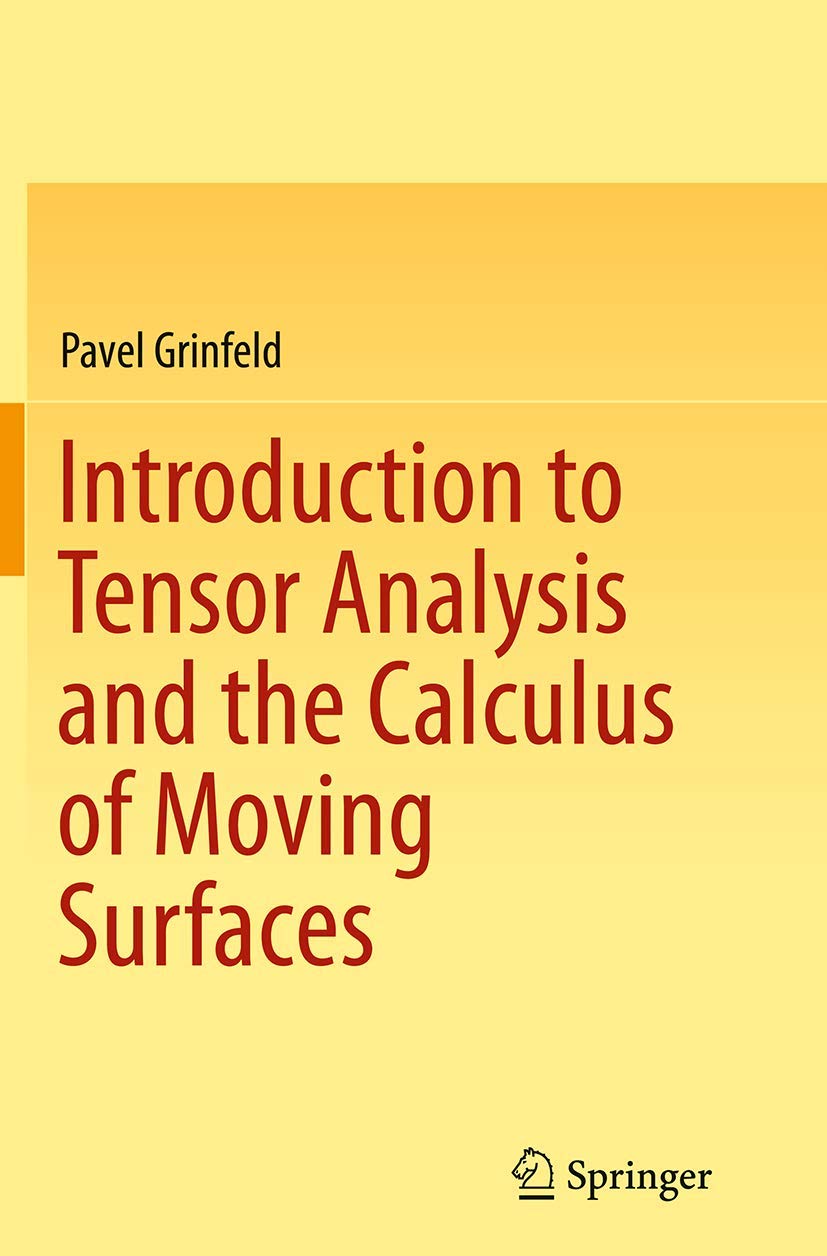Introduction to Tensor Analysis and the Calculus of Moving Surfaces
Introduction to Tensor Analysis and the Calculus of Moving Surfaces is backordered and will ship as soon as it is back in stock.
Couldn't load pickup availability
Genuine Products Guarantee
Genuine Products Guarantee
We guarantee 100% genuine products, and if proven otherwise, we will compensate you with 10 times the product's cost.
Delivery and Shipping
Delivery and Shipping
Products are generally ready for dispatch within 1 day and typically reach you in 3 to 5 days.
Here’s the beautifully organized product description for the book you provided:
Book Details
-
Author: Pavel Grinfeld
-
Publisher: Springer
-
Edition: Reprint
-
Binding: Paperback
-
Number of Pages: 302
-
Release Date: 23-08-2016
-
Language: English
-
ISBN: 9781493955053
-
Package Dimensions: 8.4 x 5.9 x 0.7 inches
About The Book
Pavel Grinfeld’s textbook provides a profound and unique exploration of the calculus of moving surfaces, extending the classical tensor calculus to deforming manifolds. Aimed at advanced undergraduate and graduate students, this work invites readers to reconsider previously learned material through the lens of tensor calculus, offering a fresh perspective on the subject.
Grinfeld’s approach is characterized by a careful balance of theory and application, gradually introducing students to new concepts. The text begins with fundamental geometric principles, laying the groundwork for understanding the mechanics of variable transformations, tensor notation, and the connection between algebra and geometry. Notably, the tensor definition appears only in Chapter 6, when readers are fully equipped to understand it, reflecting the author’s patient and progressive teaching style.
The book’s later chapters dive into more advanced topics such as differential geometry on manifolds, shape optimization, boundary perturbation, and dynamic fluid film equations. The final section presents the Calculus of Moving Surfaces—an important and exciting technique, and the first textbook treatment of this subject. Through detailed examples and exercises, Grinfeld illustrates applications like shape optimization and new derivations of classical results, including the geodesic equation and the Gauss-Bonnet theorem.
This textbook is an invaluable resource for anyone looking to deepen their understanding of tensor calculus and its applications in modern science and engineering.
Let me know if you need any further modifications!





